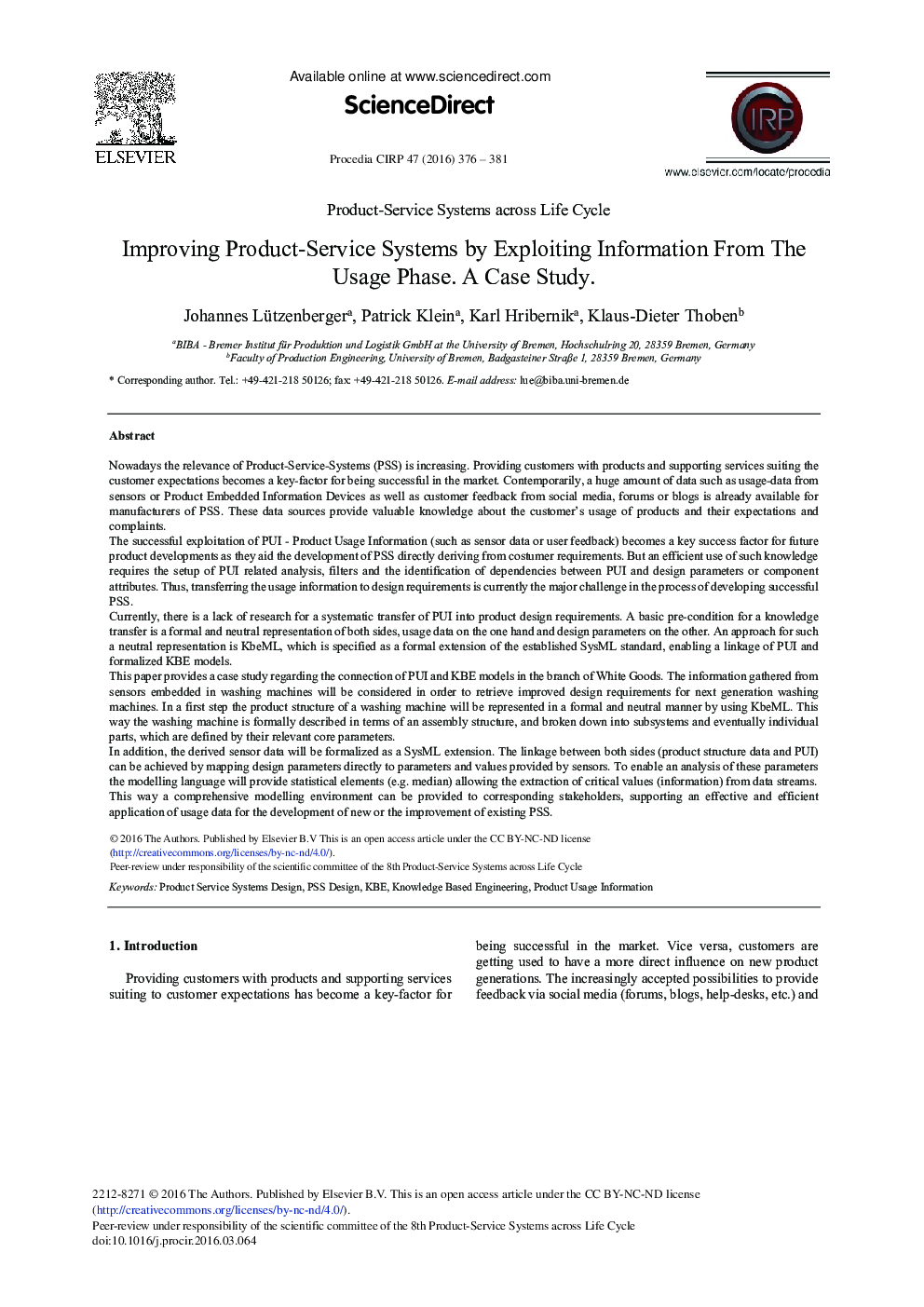| Article ID | Journal | Published Year | Pages | File Type |
|---|---|---|---|---|
| 1698326 | Procedia CIRP | 2016 | 6 Pages |
Nowadays the relevance of Product-Service-Systems (PSS) is increasing. Providing customers with products and supporting services suiting the customer expectations becomes a key-factor for being successful in the market. Contemporarily, a huge amount of data such as usage-data from sensors or Product Embedded Information Devices as well as customer feedback from social media, forums or blogs is already available for manufacturers of PSS. These data sources provide valuable knowledge about the customer's usage of products and their expectations and complaints.The successful exploitation of PUI - Product Usage Information (such as sensor data or user feedback) becomes a key success factor for future product developments as they aid the development of PSS directly deriving from costumer requirements. But an efficient use of such knowledge requires the setup of PUI related analysis, filters and the identification of dependencies between PUI and design parameters or component attributes. Thus, transferring the usage information to design requirements is currently the major challenge in the process of developing successful PSS.Currently, there is a lack of research for a systematic transfer of PUI into product design requirements. A basic pre-condition for a knowledge transfer is a formal and neutral representation of both sides, usage data on the one hand and design parameters on the other. An approach for such a neutral representation is KbeML, which is specified as a formal extension of the established SysML standard, enabling a linkage of PUI and formalized KBE models.This paper provides a case study regarding the connection of PUI and KBE models in the branch of White Goods. The information gathered from sensors embedded in washing machines will be considered in order to retrieve improved design requirements for next generation washing machines. In a first step the product structure of a washing machine will be represented in a formal and neutral manner by using KbeML. This way the washing machine is formally described in terms of an assembly structure, and broken down into subsystems and eventually individual parts, which are defined by their relevant core parameters.In addition, the derived sensor data will be formalized as a SysML extension. The linkage between both sides (product structure data and PUI) can be achieved by mapping design parameters directly to parameters and values provided by sensors. To enable an analysis of these parameters the modelling language will provide statistical elements (e.g. median) allowing the extraction of critical values (information) from data streams.This way a comprehensive modelling environment can be provided to corresponding stakeholders, supporting an effective and efficient application of usage data for the development of new or the improvement of existing PSS.
